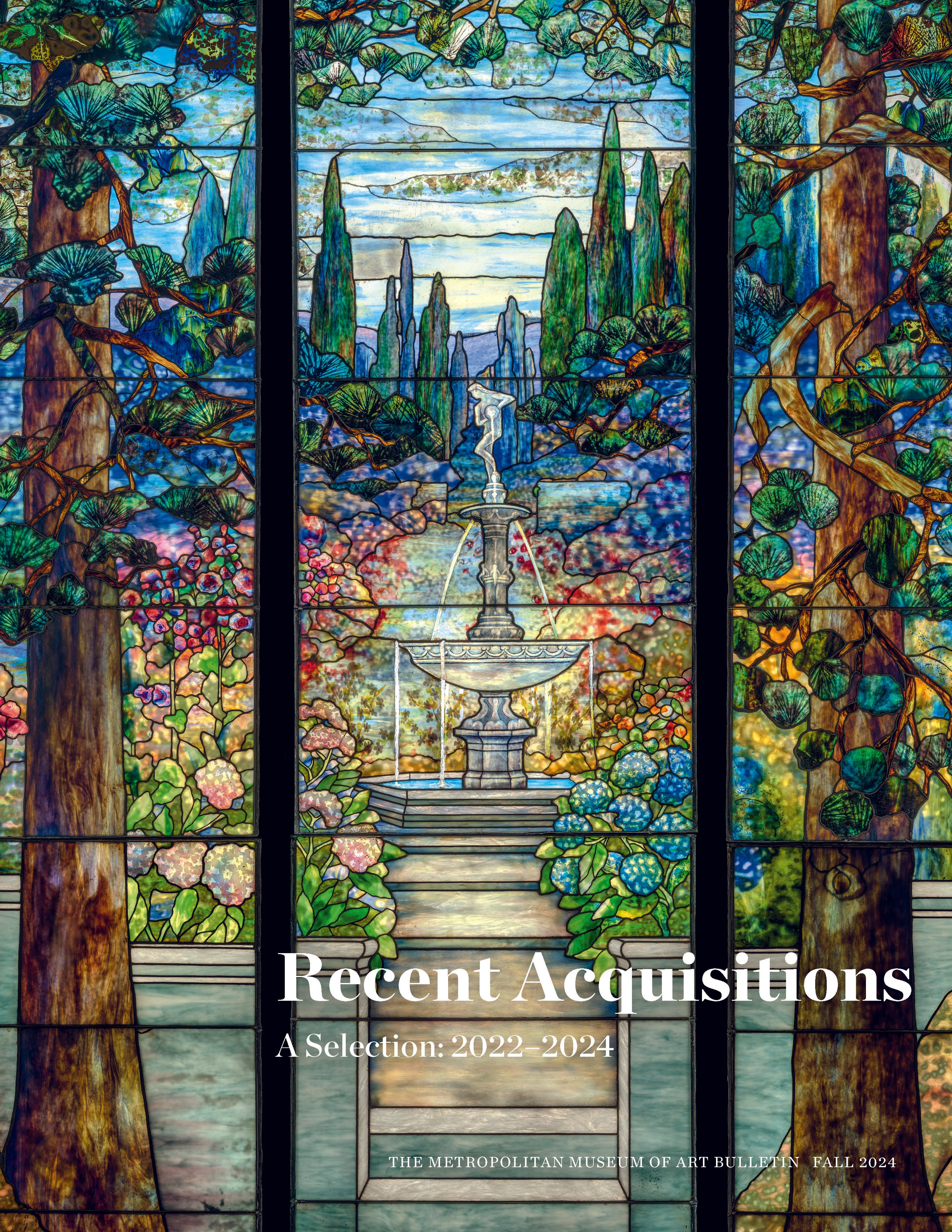Minotauro Morente
Bahman Mohassess played a central role in Iran’s pre-revolutionary avant-garde artistic and literary circles of the 1950s–70s, joining the renowned Fighting Rooster Art Society (also called Fighting Rooster Surrealists), who married an interest in European avant-garde movements with the left-wing political activism of Iran’s Tudeh Party. Mohassess fostered close relationships with Iran’s leading poets and intellectuals of the time, while also distancing himself from the artists of Iran’s so-called Saqqakhaneh school, who integrated historical artistic and religious motifs within the modernist painting frame. Having studied in Italy at the Accademia di Belle Arti di Roma in 1954, he returned to live briefly in Iran in 1964 before relocating permanently to Rome in 1968.
The vulnerability, sense of alienation, and distorted physicality embodied by Mohassess’ "minotaurs" have been understood as avatars for the artist that speak to his experiences as a gay man. The artist embraced his own queer sexuality at a time when it was illegal in many countries, including Iran and Italy, to identify outside of strict gender mores and sexual norms. Although the minotaur was feared as monstrous in ancient Greek mythology, this painting undercuts the threat suggested by the chimera’s partially animalistic nature and alien physicality by rendering him unable to stand on his own two feet. Indeed, the painting literalizes a Persian-language idiom for a state of clumsiness, helplessness, or ineptitude that translates as "without hands and feet." Here, the minotaur’s pose recalls the ancient Greco-Roman sculptural typology of the Dying Gaul, in which a seated warrior with bent legs leans into his half-bent right arm as if to steady himself. The Dying Gaul’s physiognomy and articles of clothing or props help identify him as both threateningly Other or "barbarian" as well as enfeebled. Likewise, Mohassess’ minotaur communicates a startling dual state of alterity and fragility.
Another interpretation of the theme of death and decay in the painting relates to a widely known argument popularized by one of Iran’s leading intellectuals, Jalal al-e Ahmad (1923–1969), who used illness and contagion as metaphors for the Westernization (what he referred to as gharbzadeghi, or Westoxification) in the early to mid-1960s.
The vulnerability, sense of alienation, and distorted physicality embodied by Mohassess’ "minotaurs" have been understood as avatars for the artist that speak to his experiences as a gay man. The artist embraced his own queer sexuality at a time when it was illegal in many countries, including Iran and Italy, to identify outside of strict gender mores and sexual norms. Although the minotaur was feared as monstrous in ancient Greek mythology, this painting undercuts the threat suggested by the chimera’s partially animalistic nature and alien physicality by rendering him unable to stand on his own two feet. Indeed, the painting literalizes a Persian-language idiom for a state of clumsiness, helplessness, or ineptitude that translates as "without hands and feet." Here, the minotaur’s pose recalls the ancient Greco-Roman sculptural typology of the Dying Gaul, in which a seated warrior with bent legs leans into his half-bent right arm as if to steady himself. The Dying Gaul’s physiognomy and articles of clothing or props help identify him as both threateningly Other or "barbarian" as well as enfeebled. Likewise, Mohassess’ minotaur communicates a startling dual state of alterity and fragility.
Another interpretation of the theme of death and decay in the painting relates to a widely known argument popularized by one of Iran’s leading intellectuals, Jalal al-e Ahmad (1923–1969), who used illness and contagion as metaphors for the Westernization (what he referred to as gharbzadeghi, or Westoxification) in the early to mid-1960s.
Artwork Details
- Title: Minotauro Morente
- Artist: Bahman Mohassess (Iranian, Rasht 1931–2010 Rome)
- Date: 1966
- Medium: Oil on canvas
- Dimensions: 41 3/4 × 59 1/4 × 1 7/8 in. (106 × 150.5 × 4.8 cm)
Framed: 42 9/16 in. × 60 1/8 in. × 2 11/16 in. (108.1 × 152.7 × 6.8 cm) - Classification: Paintings
- Credit Line: Art Jameel Fund, 2024
- Object Number: 2024.121
- Rights and Reproduction: Estate of Bahman Mohassess
- Curatorial Department: Modern and Contemporary Art
More Artwork
Research Resources
The Met provides unparalleled resources for research and welcomes an international community of students and scholars. The Met's Open Access API is where creators and researchers can connect to the The Met collection. Open Access data and public domain images are available for unrestricted commercial and noncommercial use without permission or fee.
To request images under copyright and other restrictions, please use this Image Request form.
Feedback
We continue to research and examine historical and cultural context for objects in The Met collection. If you have comments or questions about this object record, please contact us using the form below. The Museum looks forward to receiving your comments.
